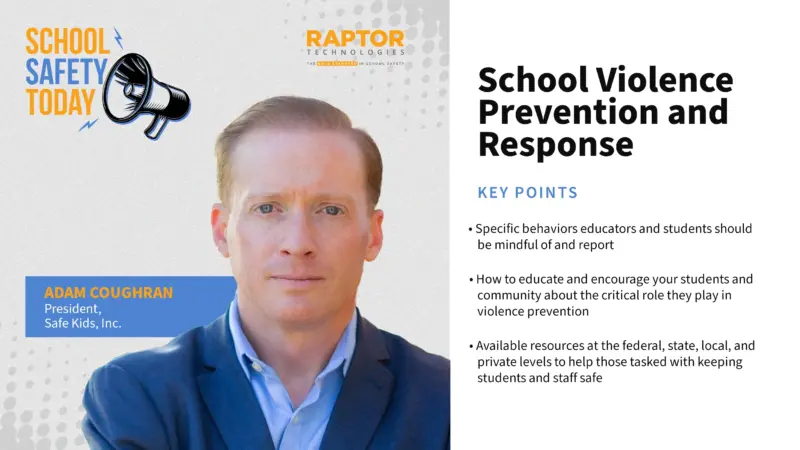Hybrid Learning Models are Here to Stay Post-Pandemic. Two experts weigh in.
As schools across the country wrap up another unusual school year, most K-12 education is still being facilitated with remote learning. However, educators are beginning to see the long-term value in a hybrid approach to teaching, according to AT&T’s* 2021 Future of School Report released today.
94% of teachers are open to the idea of hybrid learning with the proper resources, curriculum and support
71% of teachers support virtual days for inclement weather
78% of teachers are in favor of virtual tutoring sessions or enrichment programs
60% of teachers are open to livestreaming their classrooms for students who are home sick
These sentiments are consistent across teachers of all grade levels and low- and high-income schools, as well as parents:
83% of parents support virtual school days for inclement weather
84% of parents support virtual tutoring or enrichment programs
85% of parents want the option for their kids who are home sick to join class virtually
Today, 66% of teachers and parents say that students are still learning either fully remote or in a hybrid format. While remote learning got off to a rocky start, with 43% of teachers noting their experience a year ago was challenging, many have adapted to this new environment and learned tips, tricks and best practices to navigate virtual classrooms. Additionally, 48% of teachers voice a need for curricula better suited for hybrid or online teaching. Assistance from administrators was widely acknowledged by teachers with 83% reporting they felt supported with new online teaching technologies and strategies.
These findings come as the FCC stated that the first application window of the Emergency Connectivity Fund will prioritize forward-looking connectivity for school districts to help close the homework gap. This $7.17 billion program is funded by the American Rescue Plan Act of 2021 and will enable schools to purchase laptop and tablet computers, Wi-Fi hotspots, and broadband connectivity for students and school staff.
The last year has accelerated the possibilities of hybrid learning for the future of education. It also showed that education doesn’t only need to happen in a physical school building and kids can learn anything, anytime and anywhere. This expedites the need for schools and teachers to have access to the right technology and resources. As educators plan for the upcoming school year and beyond, hybrid learning will play a key part in the future of education.
What will the future of learning look like?
AT&T has an important role in providing schools the connectivity solutions needed for teachers and students to thrive now and in the long-term. As school administrators and teachers plan and prepare for the next iteration of learning, what do they need for an effective hybrid learning model? How should parents, teachers and students expect the future of education to really look like? Here are some of the technologies and solutions that will shape the future of education.
Closing the homework gap with mobile connectivity:
Delivering high-quality education for all students is the goal of every teacher—whether students are learning remotely, completing schoolwork at home, in class, or a combination of all. For an effective hybrid learning model, every student in every household needs access to reliable connectivity and devices. Wireless services help ensure learning can continue outside the four walls of the classroom. With Federal Stimulus Funds for Education, affordable solutions can help schools keep students and teachers connected.
Connecting on campus:
As educators prepare for the digital future, high-capacity network infrastructure will play a significant role on campus and in the classroom. Access to communication tools and online resources will be the largest driver for additional bandwidth to support education platforms and conferencing applications. Technology will help enable more consistent and immediate communication between teachers, students and parents in school and at home. Unified voice and collaboration applications that are easy to use and can move on and off campus have become a necessity.
Safeguarding access & data:
Ensuring that students are protected while accessing the internet in and out of the classroom is a concern shared by all educators and parents. Content filtering services and device management solutions can be used by school districts as part of a plan to filter internet sites and block student access to unacceptable content. Additionally, safeguarding sensitive student data and school information from cyberattacks is a reality in today’s world. From assessing risks to protecting against a breach and then detecting and responding when they happen—all require a multi-layered security approach.
Education is a top priority for AT&T and for decades it has been working side by side with schools to advance the future of education with technology. Since March 2020, AT&T has connected more than 500,000 students and teachers across 49 states with agile mobile connectivity. As of the end of 2020, AT&T covered nearly 16,000 school districts in the U.S., which represents 94% of students in K-12 public schools across the country.
To learn more about what AT&T is doing to help close the homework gap, visit att.com/closethegap.
What are people saying?
Matt Hickey, Vice President, Public Sector Marketing, AT&T
- “As we look forward to the possibilities that technology can bring to the future of education, hybrid learning will continue to be an important part. We need to act now to ensure every school, teacher and student has the connectivity they need to learn and thrive. I’m incredibly proud of all the work AT&T is doing to keep students and teachers connected and I applaud the FCC’s commitment to closing the homework gap by investing in the future of every student.”
Ruthbea Yesner, VP Government Insights, Education, Smart Cities & Communities, International Data Corporation (IDC)
- “Educators spent more time using technology in the last year than ever before and saw the benefits and opportunities that came with it. A lack of adequate internet access for students, especially at home, is a top issue impacting teaching and learning. As we think about the future of K-12, we expect to see an increase in the use of communication and digital tools—in and out of the classroom—and growth in hybrid learning. This means that addressing the homework gap will remain a real and significant challenge for equitable access, and it is imperative that every student has access to connectivity.”
Christine Fox, Senior Director, External Relations, Consortium for School Networking (CoSN)
- “The time is now to ensure innovative, personalized learning experiences for all learners. The pandemic highlighted inequities in the educational system and the critical need for seamless access to high-quality, safe, digital learning opportunities to best prepare students for college and careers. The recent investments in digital learning including devices, broadband access, curriculum and professional learning can and should drive change in this nation’s educational ecosystem. Schools can help level the playing field by ensuring safe, equitable opportunities for all students.”
AT&T and TRUE Global Intelligence, the in-house research practice of FleishmanHillard, conducted two distinct online surveys among 1,000 U.S. consumers who self-identify as parents with at least one child currently enrolled in a K-12 school and 500 U.S. schoolteachers who have been teaching full-time for at least two years. For Parents, the survey was 10 minutes in length and quotas were set for U.S. census region to ensure statistical representation. The margin of error was +/- 3% at the 95% confidence level. For Teachers, the survey was 12 minutes in length and the margin of error was +/- 4% at the 95% confidence level. Both surveys were fielded from April 13-21, 2021.








